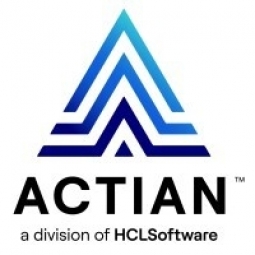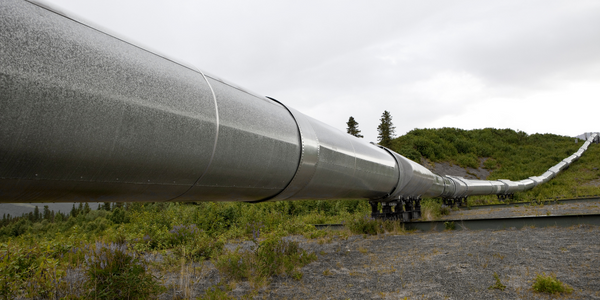Streamlining Invoicing Process in Oil & Gas Industry: A Case Study of Pinnergy and Actian Business Xchange

Technology Category
- Sensors - Gas Sensors
- Sensors - Utility Meters
Applicable Industries
- Electronics
- Oil & Gas
Applicable Functions
- Logistics & Transportation
- Procurement
Use Cases
- Inventory Management
- Last Mile Delivery
Services
- System Integration
About The Customer
Pinnergy is a leader in diversified energy services and one of America’s largest regional independent oilfield service companies. It operates in some of the most active oil and gas regions in Texas and Louisiana. Pinnergy's portfolio of services includes fluid management, drilling, oil and gas waste disposal, and rentals. By offering this combination of services, Pinnergy enables its customers to streamline their processes and operate more efficiently and safely while reducing associated costs. Pinnergy’s customers represent a wide range of large and small oil and gas industry firms, few of which relied on the same accounts payable system.
The Challenge
Pinnergy, a leading diversified energy services company, was facing significant challenges with its manual, double-entry invoicing process. The process was not only tedious but also time-consuming, taking between 30 and 90 days to get an invoice entered into a client’s Electronic Data Interchange (EDI) system. The company's customers, which included a wide range of large and small oil and gas industry firms, did not rely on any common back-office system, making electronic invoicing a complex task. As Pinnergy’s business grew, the order management became even more complex with more customers to invoice and higher volumes of transactions to manage. The invoicing process became a bottleneck, resulting in high transaction costs and accounts receivable aging. Pinnergy officials knew that an electronic invoicing solution would dramatically streamline this process, but the challenge was to find a solution that could integrate with the diverse EDI systems of their customers.
The Solution
Pinnergy turned to Actian and its Business Xchange platform to address its invoicing challenges. Actian Business Xchange is a cloud-based platform that provides B2B connectivity, linking large oil and gas organizations with their customers and suppliers. As a fully-managed B2B integration service, Business Xchange enables trading partners to exchange electronic procurement and supply chain documents regardless of format or enterprise system. This reduces costs, inefficiencies, and friction throughout their electronic trading relationships. The platform supports Petroleum Industry Data Exchange (PIDX) standards, making it an ideal solution for Pinnergy and its clients. Pinnergy initially focused on using Business Xchange to deliver its invoices electronically to its top sixteen customers, who represented 80% of Pinnergy’s overall invoicing volume and already relied on PIDX as their common EDI standard. Pinnergy used Actian Business Xchange DataConnect to upload the invoice to the Business Xchange platform, which could then be easily formatted to any customer’s requirements using PIDX standards.
Operational Impact
Quantitative Benefit

Case Study missing?
Start adding your own!
Register with your work email and create a new case study profile for your business.
Related Case Studies.

Case Study
Taking Oil and Gas Exploration to the Next Level
DownUnder GeoSolutions (DUG) wanted to increase computing performance by 5 to 10 times to improve seismic processing. The solution must build on current architecture software investments without sacrificing existing software and scale computing without scaling IT infrastructure costs.

Case Study
Remote Temperature Monitoring of Perishable Goods Saves Money
RMONI was facing temperature monitoring challenges in a cold chain business. A cold chain must be established and maintained to ensure goods have been properly refrigerated during every step of the process, making temperature monitoring a critical business function. Manual registration practice can be very costly, labor intensive and prone to mistakes.

Case Study
Remote Wellhead Monitoring
Each wellhead was equipped with various sensors and meters that needed to be monitored and controlled from a central HMI, often miles away from the assets in the field. Redundant solar and wind generators were installed at each wellhead to support the electrical needs of the pumpstations, temperature meters, cameras, and cellular modules. In addition to asset management and remote control capabilities, data logging for remote surveillance and alarm notifications was a key demand from the customer. Terra Ferma’s solution needed to be power efficient, reliable, and capable of supporting high-bandwidth data-feeds. They needed a multi-link cellular connection to a central server that sustained reliable and redundant monitoring and control of flow meters, temperature sensors, power supply, and event-logging; including video and image files. This open-standard network needed to interface with the existing SCADA and proprietary network management software.

Case Study
Refinery Saves Over $700,000 with Smart Wireless
One of the largest petroleum refineries in the world is equipped to refine various types of crude oil and manufacture various grades of fuel from motor gasoline to Aviation Turbine Fuel. Due to wear and tear, eight hydrogen valves in each refinery were leaking, and each cost $1800 per ton of hydrogen vented. The plant also had leakage on nearly 30 flare control hydrocarbon valves. The refinery wanted a continuous, online monitoring system that could catch leaks early, minimize hydrogen and hydrocarbon production losses, and improve safety for maintenance.








